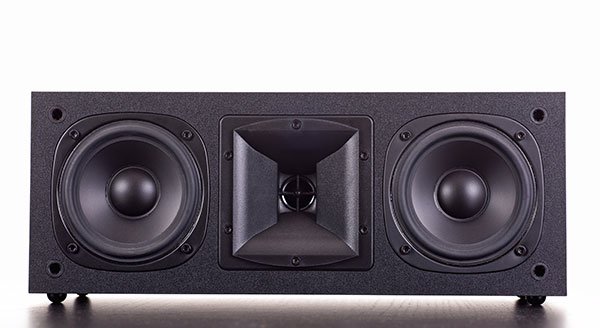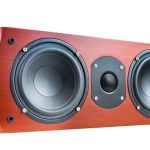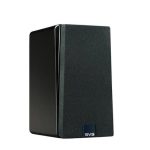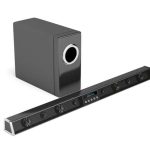We all know how important a center speaker channel is in a home theatre system. However, even the best channel speaker won’t deliver optimal performance if it is not set up and positioned correctly. When setting up your sound system, it is vital to pay close attention to the center channel speaker since it can have a significant impact on the overall sound quality.
Why is the Center Channel the most important speaker in a sound system?
Watching a movie is not much fun if you cannot understand or follow the dialog. Most of a movie’s dialog, voices, and sounds that really draw you into the movie all come through the center channel speaker. Being able to hear all these clearly is what makes a good listening experience, and this is what makes this speaker an essential component in a surround sound system.
Also, a good center channel speaker is able to deliver these sounds in a way that they are not muddled by vibrations or background noise. This ultimate surround sound experience might take a little bit of time, but it is worth the hassle at it will enhance your listening experience for years.
The Ultimate Center Speaker Placement
Since the center channel speaker’s primary role is to mix almost all audio playback, it needs to be placed close to the TV as much as possible (above/below the TV). The center channel speakers are designed in different kinds and shapes from in-wall to wall mount, to a conventional speaker in a surround sound system.
First, the center channel speaker needs to be positioned at about the height of your ears. In most systems, this will typically put the speaker either above or below your TV, and angled towards the listening area.
Ideally, your center speaker should be similar to your right and left speakers, and if possible, they should be from the same model series. The reason for this is to enable those speakers to share the same crossover components and tweeters, thus allowing seamless blending and matched voicing. It is very important that people or seats do not block your center speaker’s direct path.
i. Center Channel Speaker placement above/below the TV
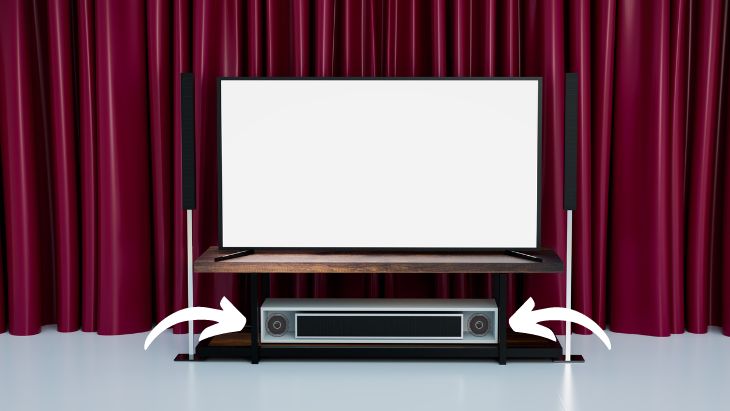
Typically, having the center channel speaker directly above or below your TV is the best position. This position is roughly about your ear level, and it will simulate sounds coming from the TV in the best way possible. The idea is to keep the center channel speaker in close range to the TV.
If the speaker is placed too far from the TV, the dialogue from the movie will seem to be coming from elsewhere. However, you’ll need to line the cabinet with appropriate insulation to help reduce cabinet resonance. This will help prevent the cabinet from adding any sounds that the center channel speaker does not reproduce that can greatly alter those subtle emotions in actors’ dialog.
ii. Freestanding Center Channel Speaker
It can sometimes be tricky for the center channel speaker to provide the desired listening experience, especially in a movie theatre setup with raised seating platforms. Placing the speaker on a standard center channel speaker cabinet might not work for every row of seating, particularly, the back rows. This is because the front row seats somewhat block the sound path.
The best solution in such a case is to place the center channel speaker on a dedicated center channel speaker stand that will help to angle the speakers and aim the drivers at your ears. You can increase the height of the stand for a clear path but not too high as to block the screen.
Once your speaker is elevated at the appropriate height, you’ll need to tilt it slightly upwards to optimize your surround sound. You can achieve this by adding a piece of foam on the top part of the stand to tilt up the speaker, or you can tilt the stand itself. This will result in a 5 to 10 degrees tilt in the position of your channel speaker.
Some prefer to use a set of monitor isolation pads to help tilt the speaker and improve the overall sound quality. These pads are ideally placed under the speaker to provide the required tilt and isolation.
iii. Center channel wall mount
Some home theatre fanatics find it more appropriate to mount a center channel speaker to the wall instead of placing it on a cabinet or a freestanding speaker stand. Wall mounts still provide the suitable tilt and height for improved performance. And just like with other placements, the speaker should be mounted directly above or below your TV. However, ensure that the mount can support the weight of your center speaker.
Additional tips for improving center channel speaker performance

Other than speaker placement, there are simple improvement tasks that you can perform to optimize the performance of your center channel speaker. They include;
- The center speaker is typically closer to the floor than the other speakers. So, you may require a way to minimize or absorb reflections from the floor and other hard surfaces. If the room is carpeted, this may not be an issue, but if you have hardwood flooring, you’ll need to take the necessary measures. Placing a piece of acoustical form beneath will help to absorb and eliminate the unwanted reflections.
- Filling the speaker stand with dry and fine sand will also help to eliminate issues with resonance. This trick is handy for anyone using stands for any speaker. And the sand does not only eliminate resonance, but it will also make your stand and speakers sturdier.
- Another thing you can do to bring about a big difference in performance is to calibrate and configure your surround sound processor or home theater receiver. Although this may not be the ultimate solution to perfect sound, calibrating the center channel speaker is going to improve overall sound quality substantially. Ideal, most center channel speakers should be set to small, and the crossover should be 80Hz. This range enables them to send the frequencies to the subwoofer. You can also use the processor setup menu to set the distance between all speakers.
It is undeniable that a center channel speaker plays a critical role in your home entertainment system. To get the best out of this speaker, you’ll need to find ways of positioning and placing this critical speaker. Proper placement will ensure that the speaker is able to track the vocals to the TV or the projecting screen. Besides, it will allow effects to flow from right to left without breaking, and that way, your listening experience cannot be compromised.
Michael Evanchuk is a San Francisco-based sound engineer with 20 years’ experience installing, troubleshooting, and repairing commercial, automotive, and household sound equipment. Evanchuk owns an auto stereo center, where he offers highly competitive car audio installation and repair services. He has written dozens of articles on different sound engineering topics, all of which have been published in leading journals, blogs, and websites.

